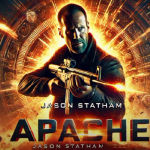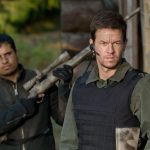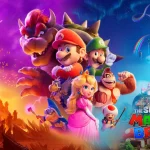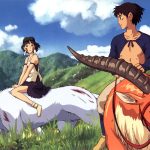The Karate Kid Part II (1986)
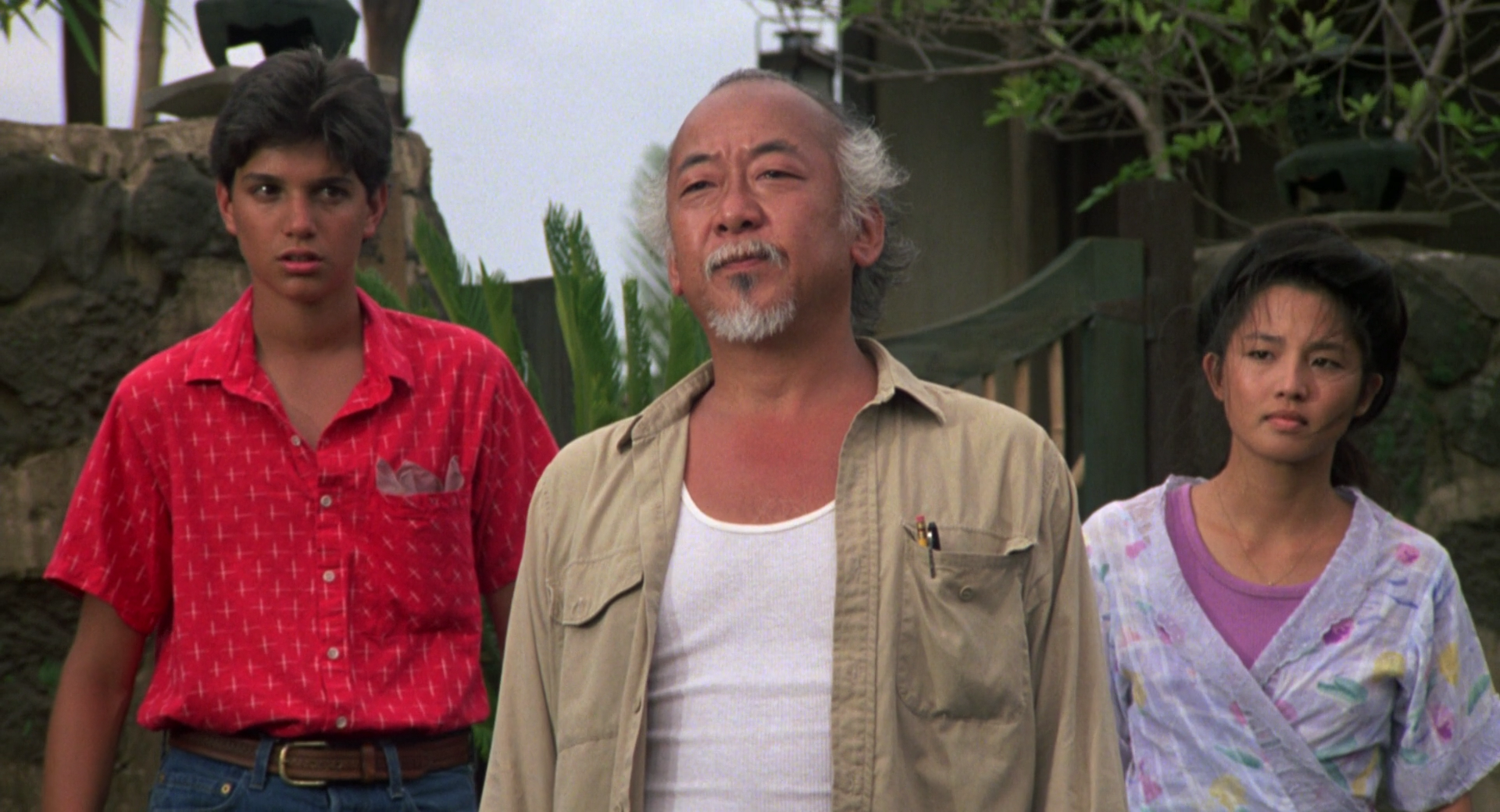
The Karate Kid Part II (1986) – A Deeper, More Emotional Sequel That Expands the Story
Introduction
Following the massive success of The Karate Kid (1984), The Karate Kid Part II (1986) continues the journey of Daniel LaRusso (Ralph Macchio) and his mentor, Mr. Miyagi (Pat Morita). Unlike many sequels that merely recycle the original film’s formula, this follow-up takes the story in a fresh direction by shifting its setting from California to Okinawa, Japan.
Directed by John G. Avildsen, The Karate Kid Part II expands on the themes of honor, love, and personal growth while deepening the bond between Daniel and Miyagi. With stunning locations, emotional stakes, and thrilling fight sequences, this film is often considered one of the best sequels of the 1980s.
In this in-depth review, we’ll explore The Karate Kid Part II‘s plot, themes, character development, action choreography, cinematography, cultural impact, and why it remains a beloved installment in the franchise.
Plot Summary: A Journey to Okinawa
The film picks up immediately after the events of The Karate Kid. After Daniel’s victory over Johnny Lawrence in the All-Valley Karate Tournament, he discovers that his girlfriend Ali has broken up with him. Meanwhile, Mr. Miyagi receives a letter from Okinawa informing him that his father is gravely ill.
1. Returning to the Past
Mr. Miyagi decides to return to his homeland, and Daniel insists on accompanying him. Upon arriving in Okinawa, Miyagi is reunited with his childhood love, Yukie (Nobu McCarthy), whom he left behind decades earlier. However, their return stirs old tensions with Sato (Danny Kamekona), Miyagi’s former best friend who now seeks revenge over a past dispute regarding Yukie’s love.
2. A New Rival: Chozen
Daniel soon meets Kumiko (Tamlyn Tomita), Yukie’s niece, and they form a romantic bond. However, Daniel also encounters Chozen (Yuji Okumoto), Sato’s aggressive and dishonorable nephew, who becomes his new antagonist. Unlike Johnny Lawrence from the first film, Chozen is more ruthless, challenging Daniel at every turn.
3. Life and Death Stakes
As Miyagi attempts to make peace with Sato, tensions rise when a storm threatens the village. Miyagi and Daniel’s heroism during the disaster earns them newfound respect, but Chozen remains determined to humiliate Daniel. This leads to a climactic duel where Daniel must fight for honor, rather than just competition.
The final battle between Daniel and Chozen is intense, featuring Daniel using his newly learned drum technique to defeat his opponent. Instead of delivering a finishing blow, Daniel shows mercy, proving that true strength comes from restraint.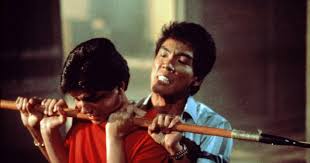
Themes: Honor, Love, and Growth
1. The Meaning of Honor
One of the film’s strongest themes is the concept of honor and how it differs across cultures. Miyagi embodies the philosophy that honor comes from humility and inner peace, while Sato and Chozen initially view honor as dominance and revenge. By the end, both Sato and Chozen are forced to reconsider their beliefs.
2. Love and Sacrifice
Miyagi’s relationship with Yukie is a poignant aspect of the film. His past decision to leave Okinawa for a better life reflects the sacrifices many people make for duty and tradition. Daniel’s romance with Kumiko also mirrors this theme, as they both struggle with the possibility of being separated by their respective futures.
3. Growth Beyond Fighting
Unlike the first film, where Daniel’s journey was about proving himself in a tournament, The Karate Kid Part II focuses on deeper personal growth. Daniel must learn that karate is not just about fighting—it’s about character, wisdom, and self-control.
Character Development: Deeper Relationships and Stronger Villains
1. Daniel LaRusso (Ralph Macchio)
Daniel matures significantly in this film. He starts as an eager but naïve student and evolves into someone who understands that karate is not just about competition but about life’s challenges. His courage in standing up to Chozen, despite the life-threatening stakes, shows his transformation.
2. Mr. Miyagi (Pat Morita)
Miyagi’s backstory is explored in greater depth, making him even more compelling. His emotions are more pronounced as he deals with his past, lost love, and the pain of old friendships turned sour. Pat Morita delivers an incredible performance, balancing wisdom with vulnerability.
3. Sato (Danny Kamekona)
Initially portrayed as a bitter and vengeful figure, Sato undergoes one of the most significant character arcs in the film. After experiencing Miyagi’s compassion during the storm, he realizes that honor is not about revenge but about respect and humility.
4. Chozen (Yuji Okumoto)
Chozen is one of the most ruthless antagonists in the Karate Kid series. Unlike Johnny Lawrence, who had a sense of honor despite his aggression, Chozen has no such restraint. His final battle with Daniel is about life and death, making him a more dangerous opponent.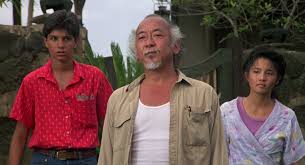
Action and Choreography: Realistic and Impactful Fights
The fight sequences in The Karate Kid Part II feel more authentic and brutal compared to the tournament-style fights of the first film.
1. The Final Duel – Daniel vs. Chozen
Unlike the controlled environment of a tournament, the final fight between Daniel and Chozen is raw and intense. The stakes are higher, with Daniel fighting for survival rather than a trophy. His use of the drum technique, a lesson learned earlier in the film, showcases how patience and skill can overcome brute force.
2. Miyagi’s Moments of Wisdom and Action
Miyagi’s fights are brief but impactful. His effortless defeat of multiple attackers reinforces his mastery of karate while maintaining his belief that violence should be a last resort.
3. The Storm Sequence
While not a traditional fight scene, the storm sequence serves as an action-packed moment where Miyagi and Daniel display their heroism. Their acts of bravery highlight the theme that true strength comes not from fighting but from helping others.
Cinematography and Setting: A Visual Expansion of the Karate Kid Universe
Unlike the first film, which was set in suburban California, The Karate Kid Part II takes place in Okinawa, Japan. The cinematography captures the beauty of the island, showcasing its traditional villages, serene landscapes, and rich cultural history.
1. The Beauty of Okinawa
While the film was primarily shot in Hawaii due to logistical reasons, it convincingly represents Okinawa’s rural charm. The contrast between the peaceful setting and the intense conflicts adds to the film’s emotional depth.
2. Cultural Authenticity
From tea ceremonies to traditional Okinawan dance, the film incorporates cultural elements that deepen the story’s authenticity. This helps make The Karate Kid Part II more than just an action film—it’s a cultural exploration.
Box Office and Critical Reception
1. Box Office Success
- The Karate Kid Part II was a commercial hit, grossing over $115 million worldwide, surpassing its predecessor’s box office earnings.
- It became the highest-grossing film of the franchise at the time.
2. Critical Reception
- Rotten Tomatoes Score: 45% (Critics), 70% (Audience)
- Metacritic Score: 55/100
- Critics were divided, with some praising its deeper story and character development, while others felt it lacked the charm of the original.
3. Academy Award Nomination
Pat Morita received a Golden Globe nomination for Best Supporting Actor, reflecting his continued excellence in portraying Mr. Miyagi.
Why The Karate Kid Part II Stands the Test of Time
- Expands on the First Film – It takes Daniel and Miyagi’s journey to a new level rather than repeating the tournament format.
- Higher Stakes – The conflict is no longer about a competition but about life, honor, and family.
- A Deeper Emotional Core – Miyagi’s past and Daniel’s growth make the film more meaningful.
- A Worthy Villain in Chozen – One of the most dangerous antagonists in the franchise.
Conclusion: A Bold, Emotional, and Action-Packed Sequel
The Karate Kid Part II (1986) is a rare sequel that expands on its predecessor rather than just imitating it. With its breathtaking Okinawan setting, strong character development, and intense action sequences, it delivers a story that feels grander yet more personal.
Final Verdict: ⭐⭐⭐⭐½ (4.5/5) – A Powerful Sequel That Elevates the Franchise.

